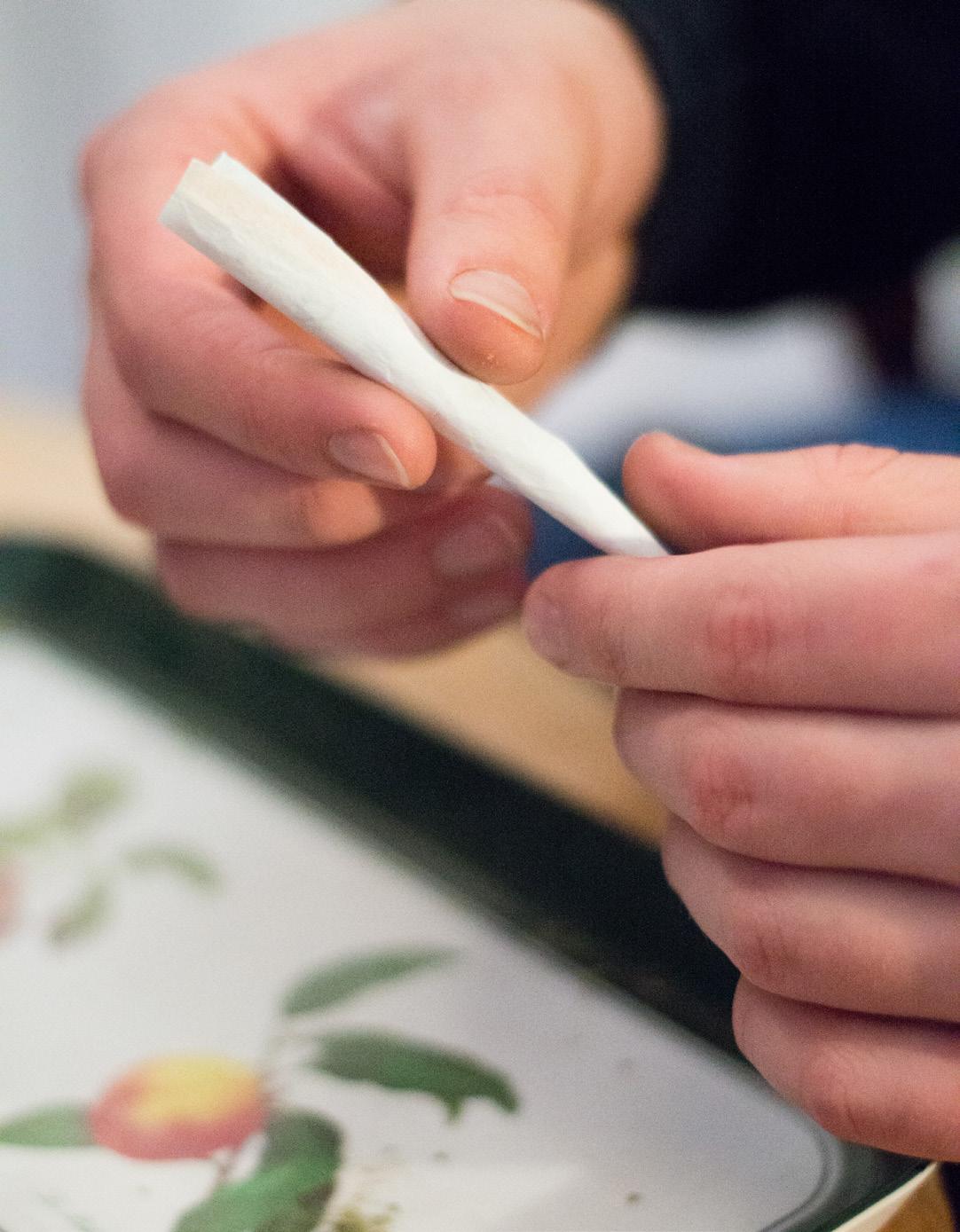
3 minute read
What’s Up With Vapes? Blowing clouds responsibly
Within the cannabis industry, there are limited regulations for how an extract is supposed to be made. Because of this, companies are able to add synthetic and natural food-grade terpenes, something that we don’t know much about the safety of when inhaled. Common ingredients added to vapes to promote the flow of liquid to vapor include medium-chain triglycerides (MCT), vegetable glycerin and propylene glycol. Additives such as these have also never been tested for long term safety when inhaled, but all three of the above have been implicated in the “popcorn lung” crisis circa 2016. Failing to add MCT oil or botanically derived terpenes to the ingredient list can lead to consequences and negative attention from the OLCC, and for good reason.

Advertisement
Other concerns surrounding the epidemic of vaping go back to the material used for the process. The OLCC does not require testing for mold, mildew, or heavy metals in any cannabis product that goes to market. Only four of 33 states that have legalized cannabis for recreation and/or medical use require heavy metal testing. Furthermore, the requirements for pesticides vary by state, with California having the strictest restrictions. These issues pose a concern because if the contaminated flower is processed for smoking or ingestion, certain pesticides or other chemicals are toxic or can turn toxic throughout the process of consumption. Although, with extraction processes that use solvents such as CO2 and butane, some extractors say that mold can be eliminated from the final product. However, this is tricky because while the toxin may not be live, the mold spores are still present in the finished product. States like Colorado test their cannabis for mold, which allows processors to take cannabis that tested positive for mold and process it into an extract for resale as long as that end product tests free of mold.
Updated information on the “vape crisis” can be found on the Center for Disease Control’s website, as well as from CannaSafe Labs and the American Chemical Society’s Cannabis Chemistry subdivision.
This article will be updated online periodically at greeneugene.com to reflect the numbers as updated by the CDC. How to prevent bad vape pen purchases
Avoid flavored vape pens. We all know they’re tasty but added synthetic and natural terpenes are volatile and harsh compounds. There are also no regulations on their production and sale. Although some can be a bit pricey, look for Rosin or CO2 cartridges that have less than a 10-15% total terpene count. These processes not only capture the full cannabinoid and terpene profile of the flower, but they also are some of the cleanest methods to extract oil from the plant.
Some cartridge brands that are my personal favorites include; Artifact Extracts, Echo Electuary, Happy Cabbage Farms, Oregrown, White Label Extracts, and Willamette Valley Alchemy.
Buy only from a licensed shop. A reputable and licensed source should be the only place you purchase vape pens. This includes not buying CBD vape pens from online distributors. Research the brand! By keeping yourself up to date with the brand, you can likely look at pictures of their grows, team members, and final products. In addition to doing your research, an important thing to look for in a brand are ones that can tell you exactly what farm supplied the flower they extract from.

W r i t t e n b y K i m b e r l y H a r r i s


P h o t o g r a p h e d b y D a n a S p a r k s









